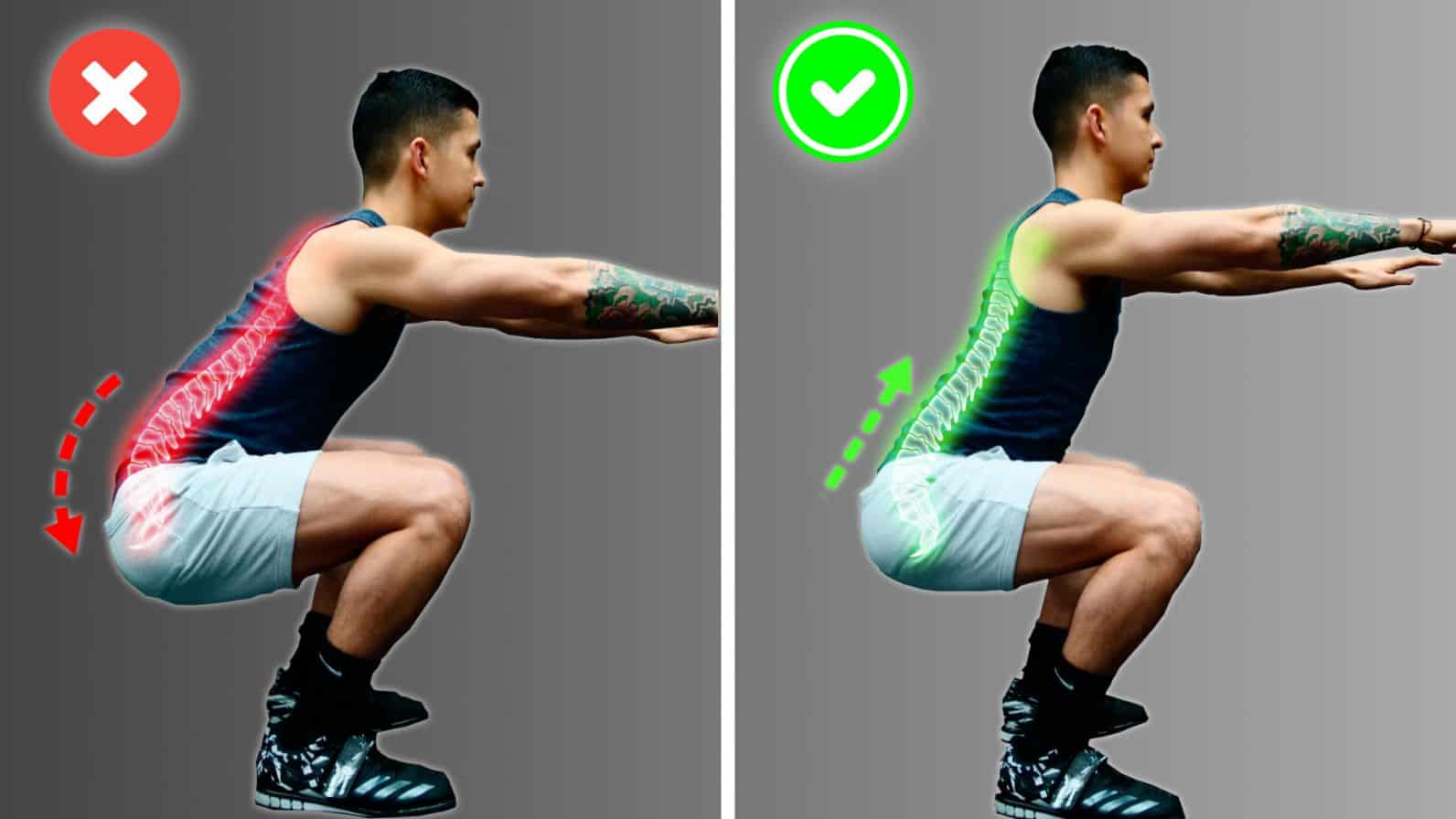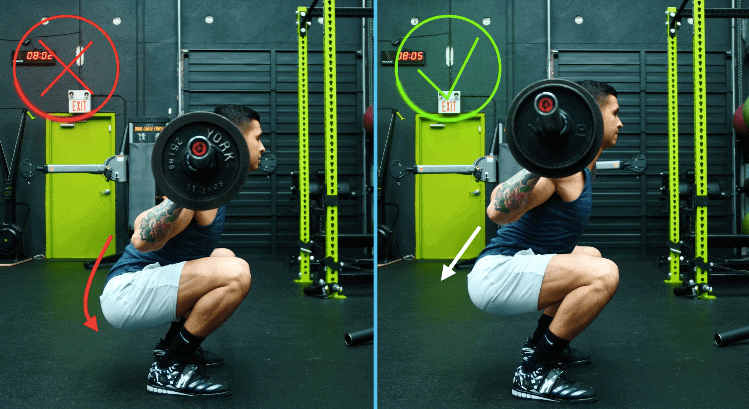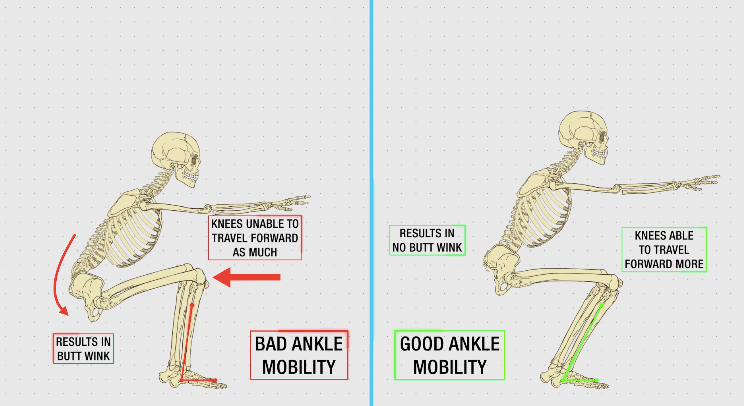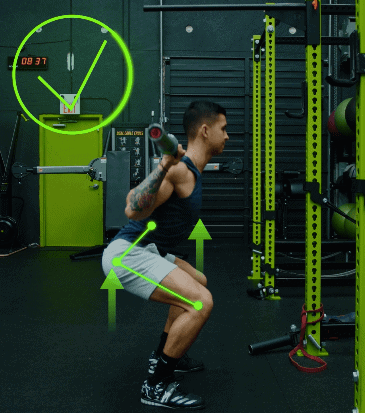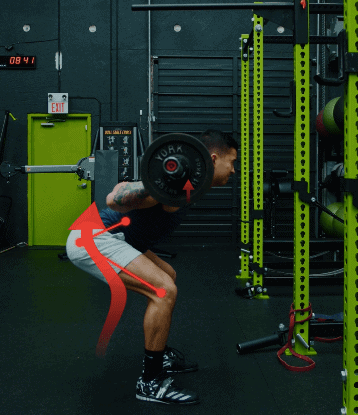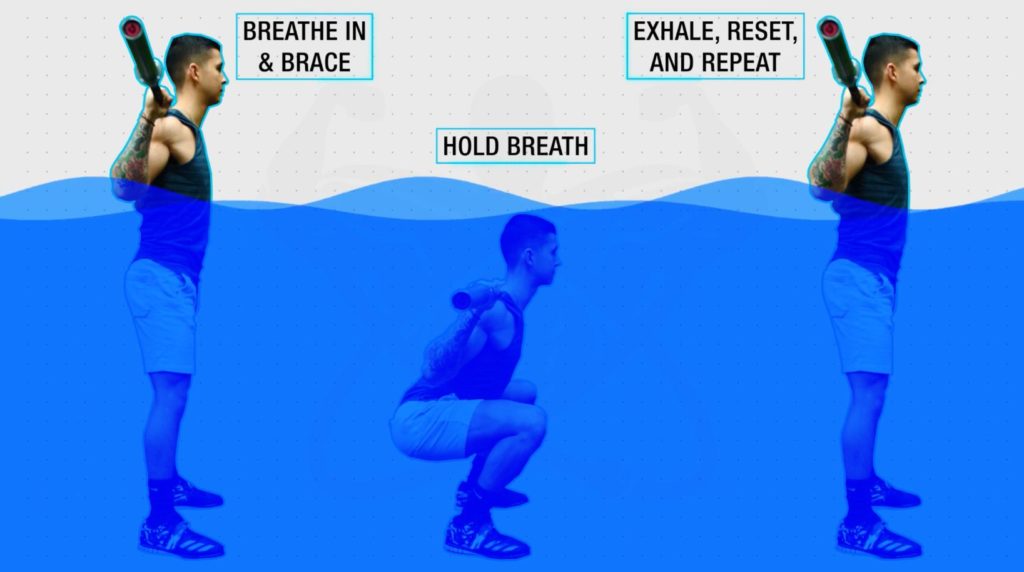How To Squat Properly (3 Mistakes Harming Your Lower Back!)
When it comes to lower body strength and size, there’s no doubt that squats are king. But at the same time, the squat is one of the more 'risky' exercises in the gym. Which is why I'll cover how to squat properly in this article, so you don't injure your back.
Research (here and here) in trained lifters often finds that squats are the most commonly cited injury-causing exercise performed in the gym. More specifically, it seems that of these squatting injuries, the lower back tends to come up as the most frequent site of injury.
Which is simply because the spine is biomechanically the most vulnerable of the joints when squatting.
Now, this doesn’t mean that the squat is a dangerous exercise that you should avoid. Because it’s not. And it’s actually a great strengthening movement for your lower back. But this does mean that you need to pay careful consideration to how you execute the squat.
That's because there are a few common mistakes that people make with it that can contribute to lower back pain.
And injury over time. In this article, I’ll go through exactly what those mistakes are. And how to fix them, so you can avoid injury and build up a stronger, pain-free squat.
A short note before we begin: as the saying goes, prevention is always better than cure. That's why I design every BWS program carefully to ensure that it will not cause unnecessary stress to your spine - which can worsen lower back pain. If you're interested in transforming your physique in the most time-efficient and safe manner:
Click the button below to take my analysis quiz to discover the best program for you:
↓
Mistake 1: Butt Wink
The first mistake you’re making has to do with something called butt wink. Which is the term used to describe when someone gets close to the bottom of their squat and:
- Their pelvis starts to posteriorly tilt, and
- Their tailbone tucks under them,
- Which then creates a little bit of rounding or flexion in the lumbar spine
You can see what I mean in the above left photo.
Although there is some controversy behind this, research does seem to indicate that this subtle rounding of the lumbar spine is associated with spinal disc injuries. And can become problematic over time. Especially when it’s done repeatedly with heavy loads as in the weighted squat. So, we ideally want the pelvis to remain neutral as opposed to rounded at the bottom position of the squat.
Now, it's true that some individuals just can’t change the amount of butt wink they experience. This is due to anatomy issues, where the femur only has so much available range of motion. Meaning that deep squats just wouldn’t be best for them.
Most Individuals Experience Butt Wink Because Of Mobility Issues
However, it's crucial to note that most individuals experience this butt wink simply due to mobility issues. With the most common issue being a lack of sufficient ankle mobility.
To see this, just look at two recent papers (here and here) that analyzed the effect of ankle mobility on the squat.
Both papers found that when the ankle mobility in subjects was put in a restricted condition to simulate poor ankle mobility, there was:
- An increase in lower back stress as well as
- A greater amount of lumbar flexion or butt wink seen
When compared to subjects who were unrestricted in their ankle mobility during the squat.
And we can clearly see why this happens here with Skeletor.
When you have adequate ankle mobility, your knee is able to travel forward more as you descend. And you can reach proper depth without your lower back and pelvis needing to compensate.
On the other hand, if your ankle mobility is restricted, your knee can’t travel forward as much. So in this case, if you wanted to reach proper depth in the squat, you wouldn’t be able to. Because your body would fall backward since your center of gravity has shifted back. To prevent this from happening, what the body does is it will compensate by rounding the back and the pelvis so that you can achieve proper depth without tipping backward. Which is why having tight ankles is often the culprit to this butt wink problem.
You Need To Improve Ankle Mobility If You Have Tight Ankles
I'll be honest. I personally have very tight ankles. And, for example, when I do a barefoot squat without warming up, you can clearly see butt wink occurring. But if I raise my heels up on some plates as I squat, the butt wink completely disappears. Because the lift helps with my ankle mobility. So I’d suggest that you film yourself. And try this little experiment out to see if this is indeed the case for you as well.
And if it is, then what you’ll want to do is simply incorporate daily ankle mobility stretches and before you squat. As that’s been shown to significantly improve ankle mobility restrictions. So exercises like various weighted ankle stretches, wall ankle stretches, and just holding a deep squat are all great daily movements that you should be doing to quickly improve your ankle mobility.
How To Squat Properly With "Quick Fixes"
In addition to this, some “quick fixes” are to:
- Use a wider stance - A wide squat stance enables you to squat deeper with less ankle mobility. Since the knees don’t have to travel forward as much.
And
- Invest in lifting shoes - Squat shoes provide a heel lift which helps with your ankle mobility. And here's a link to the ones I use and recommend.
Regardless, until you improve that excessive butt wink in your squat, it would be best to either:
- Limit your depth during heavy squats to parallel
Or
- However deep you can go without that excessive rounding
To avoid any potential issues arising over time.
Mistake 2: Hips Rising Too Fast (“Good Morning Squat”)
The next crucial mistake you’re making with your squat is very subtle to catch. Yet is a big problem when it comes to lower back stress and pain. So ideally, when you rise out of the bottom of the squat, your chest and hips should rise up at approximately the same rate in one fluid motion. Which enables the bar to travel straight up and down as you squat:
However, what some people do instead is something termed as the “good morning squat.” Which is when the hips shoot up and rise at a much faster rate than the chest does:
And this causes the bar to shift forward. And the upper body to lean forward excessively out of the bottom position.
This is problematic because we know that greater forward lean and forward bar movement during the squat increases the lumbar forces and shear stress experienced at the spine.
To minimize these dangerous forces on the lower back as you squat, you need to focus on:
- Keeping that chest upright during the ascent and
- Ensuring that your hips aren’t shooting back behind you
Especially as you fatigue later on during your sets.
Never sure if you're performing your squats safely - and optimally for muscle growth in the gym? Don't worry. Our 3-on-1 coaching program can help. My team of experts here at BWS – and I – will always take the time to explain the dos and do not's of each exercise's execution in your personalized training program. Find out more about how we can help you achieve your dream physique below:
Click the button below to find out more about the 3-on-1 coaching program:
↓
Weak Quadriceps Negatively Influence Proper Squat Form
And if you struggle with this, then this likely has to do with both your motor coordination. And a weakness in your quadriceps. Because if your quadriceps are weak at the bottom position, your body will compensate by relying more on your relatively stronger glutes and lower back to now carry the load which is why we see the hips shoot back.
And in fact, multiple research papers like this one from the Spine journal are in support of this. And found that when subjects pre-fatigued their quadriceps so that they’d be relatively weaker before performing a squat, they tended to now lift with the stooping squat pattern discussed earlier. This is so they could decrease the demand placed on their quadriceps.
Paused Squats Teach You How To Squat Properly By Engaging Your Quads
To correct this, the best course of action would be to lighten the weight. And start incorporating paused squats instead:
- Briefly pause at the bottom position of the squat,
- Come up to about halfway up,
- Pause again,
- And then come back to the top.
During every rep, you need to ensure that your hips and chest are rising at the same rate. It’s also useful to use various cues to help you with this. Such as thinking about “driving your chest up” as you come out of the bottom position. Performing paused squats in this manner will help force your quads to remain involved during the most difficult parts of the squat.
And will help you nail down that much-needed coordination. As you get better and stronger with this, you can start transitioning to normal squats and overloading that. As long as you can maintain that new proper form, of course.
Mistake 3: Breathing
The last mistake has to do with how you breathe during the squat. Which is something that most people overlook.
So I’m sure many of you have been advised to breathe in on the way down and breathe out on the way up for our exercises. Although this is fine to do for most exercises and sets that are less strenuous, when it comes to your more fatiguing and heavier sets of barbell squats, doing this is going to result in a ton of instability as you lift.
So instead, you need to use a breathing technique that increases something called your intra-abdominal pressure within your abdomen as you squat. Which has been shown in multiple papers (here and here) to stabilize and protect your back when squatting. It does so by significantly reducing the spinal compression and lumbar load that it experiences.
And to do so, you’ll want to think it about as if you were going underwater every time you squat:
- Take a big breath into your abdomen
- And then brace your core as if someone were about to punch your stomach
- Keep bracing and hold this breath as you “go underwater” descend and ascend during your rep
- And then exhale and reset at the top position as you come out of the water
It does take some practice to get used to but is essential that you do. As it will lead to a stronger, more stable squat and better ensure that your lower back is protected as you start working with heavier weights.
How To Squat Properly: Action Plan
So to sum the video up, here’s the exact action plan you’ll want to take for your squats. I would highly recommend that you actually take the time to film yourself from the side. Or get someone to film for you just to see if you’re making any of these mistakes.
- If you experience excessive butt wink at the bottom of your squat, test if it’s due to ankle mobility instructions. If it is, perform daily ankle mobility exercises and avoid deep heavy squats (go to parallel instead) until your mobility improves.
- Avoid the “good morning” squat where the hips shoot back as you come up from the bottom of the squat. To correct this, incorporate paused squats and think about “driving the chest up” out of the bottom position as you squat.
- During your heavier sets of barbell squats, you can protect your lower back and add more stability by raising your IAP with the “underwater” breathing analogy presented earlier.
But by being aware of these key points as you’re squatting and implementing the necessary fixes for them, you’ll be able to both alleviate any lower back pain you may be experiencing when squatting and better protect your lower back from injury in the long run.
And if you’re looking for a science-based plan that optimizes your exercises and all the various aspects of your program for you in an easy to follow manner such that you can quickly build strength and size as effectively and as safely as possible with science:
Click the button below to take my analysis quiz to discover the best program for you:
↓
I hope you enjoyed this article! Don’t forget to give me a follow and connect with me on Instagram, Facebook, and Youtube as well, in order to stay up to date with my content.






